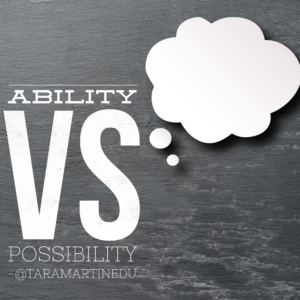For the last four years, I have had the honor to work alongside many educators as an instructional coach. It seems as though each time we would reflect together about best practices in our profession, we often found ourselves discussing questioning techniques. In the “Siri At Our Fingertips” world we live in, it seems a bit unnatural to ask open-ended questions. In fact, when I pose a question in the Google bar, I expect an answer, with a video explanation and a few links for me to discover all aspects of the solution. I think it’s safe to say, we want answers, and we want them quick. However, let’s consider how we might adjust our questioning skills to focus less on the ability to get the right answer and increase the variety of possible answers?
Before becoming an instructional coach, I was able to attend the Learning-Focused Relationships workshop with Bruce Wellman and Laura Lippman. We spent our three-day experience centered around the book Mentoring Matters. Bruce engaged us in a variety of activities to develop learning-focused relationships with our colleagues and students. Naturally, communicating was an essential piece of our workshop. On day one, he handed us a Meditational Mat to help guide our conversations. Over the course of the three days, we practiced interactions with each other using this mat to guide our discussions.
This experience changed the way I now engage in conversations. After the workshop, I decided to create a tool for teachers to use that might aid in asking more open-ended questions to their students. I got the idea to develop the Questioning Mat from the Meditational Mat.

Why a Prescribed Questioning Mat?
The mat is simply a tool to practice developing well-crafted “thinking” questions that have a plethora of possibilities for solutions. When working with teachers, I introduce the Questioning Mat as a means to guide us until we are fluent. In fact, we use scenarios they might encounter in the classroom and take turns crafting a question using the steps below. It feels a bit robotic at first, but when you hear the students’ responses, it changes the awkward feeling of developing the question, to one of excitement and wonderment at their thought process when answering it.
REAL Feedback About the Questioning Mat’s Effectiveness
Last year, I used this mat in a few professional development sessions and later had a kindergarten teacher contact me about helping her increase the open-ended questions she asks her students. She and I walked through the process discussed in the video below, and she began to use the mat when developing lesson plans to form a few questions ahead of time. I realized exactly how effective this teacher was with her new questioning skills when a little five-year-old boy in her class challenged me with one. Priceless!
I was helping her kindergarteners get signed onto the computer for their end-of-the-year benchmark assessment, and the technology was giving us a fit. For the sake of privacy, I’ll name this little guy Ben. There are a few things you need to know about Ben to get the full effect of his absolute cuteness; he is very outgoing and says his /r/’s as /w/’s.
When I walked over to help Ben with his computer issue, he said, “Mws. Mawtin, how might you descwibe the pwoblem?” I couldn’t help but giggle but knew he was searching for some adjectives and an answer he could find relateable. I replied, “Hey buddy, I love your question.” (winking at his teacher) “Ben, it seems many friends are trying to get on our Internet system at the same time. So, the server we use to get on the web is getting all clogged up. Let’s try to sign out and sign back in.” Immediately, he says, “Mws. Mawtin, it sounds like the computers are having a twaffic jam!” Then, he proceeds to tell me about how he and his family were stuck in a traffic jam, a car broke down and all of the many other frustrating events that happened that day. In my mind, I thought–this is brilliant and assured Ben he was on right track, “Exactly, Ben! It’s like a server-traffic-jam, and it seems to be causing frustration with others–just like your story. What a great connection little buddy.”
And just like that, five-year-olds are modeling their teacher by asking open-ended questions and relating the solution to their world.
How do we use it?
I print the 2-page Questioning Mat PDF front and back and distribute to the teachers. For professional development, I typically provide cards with classroom scenarios typed out and have the participants work in groups to form a question using the Questioning Mat that responds to the situation in the script. It’s quite an experience to shift the ability words to possibility words, but practice makes perfect.
If you try it, let me know what you think. How might you describe your ideal questioning strategy? Please share.
The 3-minute video below will explain how to use the mat. *Please stop the video at 3:09. The last part is repeated–“rookie-blogger” error. #REALtarammartin
For more questioning resources, click here.


